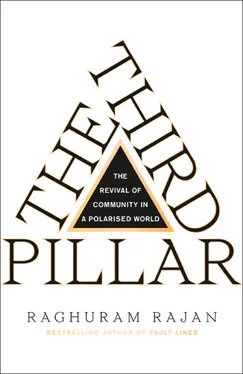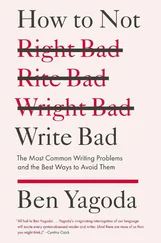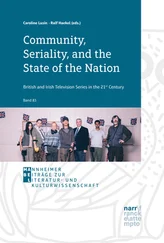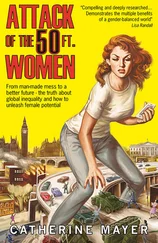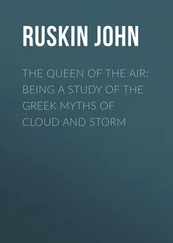Calvin’s views on usury were consistent with his arguments about business. He maintained that the arguments against usury in the Old Testament were so that ‘mutual and brotherly affection should prevail among the Israelites’, so that they could trade conveniently among one another without conflict. 39It was an argument for a different age and different community circumstances, and could not be deemed universal – even in the Old Testament, usury had been permitted to strangers. Therefore, usury was permissible ‘if it is not injurious to one’s brother’.
Taking on Aristotle, Calvin asserted that money was barren only if unused. If used productively – invested in land or trade – the borrower is not defrauded when he pays a portion of his profits for the use of money. Thus all interest need not be condemned for otherwise ‘we would impose tighter fetters on the conscience than God himself’. 40Nor, Calvin argued, do the Scriptures prohibit a reasonable charge for money. Observing that the Hebrew word for interest, neshek, meant ‘to bite’, Calvin argued that the Bible prohibits only ‘biting’ interest, which oppresses the poor. 41
So while Calvin’s theology sanctified the pursuit of wealth and removed the associated taint of avarice, it also created a space for saving and lending at moderate interest rates. Such a positive interest rate was necessary to give the accumulative capitalist the incentive to be ascetic in his spending and save. It was also a pragmatic recognition that the needs of capitalistic business differed from those of the penurious household. While urging continued protections for the poor, Calvin opened the way for ordinary business lending.
Weber argues that Calvin also paved the way for the rise of capitalism. Instead, Calvinism may simply have been a rationalisation and legitimisation of emerging business practices rather than the wellspring for capitalism. Nevertheless, by transforming business from a furtive activity done in dark corners hidden from religious authorities to one that was publicly praiseworthy and indeed a route to salvation, Calvinism did much to encourage the further growth of business. Calvin may have imbued the bourgeoisie of Western Europe in the sixteenth century with a sense of being chosen and predestined, much as Marx anointed the proletariat of the nineteenth century. 42
In sum, from about the middle of the fourteenth century, the Church’s attitude toward usury softened, probably as much by necessity as by conviction. 43Usurers were allowed to be buried once again in church graveyards, and various kinds of contracts involving interest were declared non-usurious, with only excessive interest being deemed sinful. While the Church’s views of business were not irrelevant after the Reformation, its influence certainly diminished greatly.
Moreover, religion was no longer a significant unifying national force in the emerging Western European nation-states – some nations had both sizable Catholic and Protestant populations, while nations with predominantly Catholic populations needed an identity that differentiated them from co-religionists elsewhere. As we will see in the next chapter, a new form of devotion, nationalism, started edging out religious zeal across Europe. It too would affect attitudes toward business and finance, as well as the community.
CONCLUSION
Around the end of the first millennium in the Common Era, commerce and finance started stirring once again in Europe. As monetary transactions started undermining the stability of the feudal community, the community via the Church struck back and imposed severe limitations on the behaviour permitted in finance and goods markets. Over time, and as both the unifying power of the monarch and the size of the market grew, some of the restrictions on business and finance started impinging on economic activity as well as on the monarch’s finances. The antibusiness scholarly ideology protecting the feudal community and constraining the market gave way to a more tolerant view, which gave individuals greater freedom to transact – the dominant scholarly view changed with public need, as it invariably does, even though theoretical reasoning is not supposed to have such flexibility! Trade, land sales, and debt weakened reciprocal feudal obligations and replaced them with market transactions. The state and the market grew together, even as the feudal community weakened.
The Church’s power also declined, leaving the nation-state in ascendancy. However, its period of power had served a purpose – to push the state, at least in some parts of Western Europe, to acknowledge the possibility of a higher law, and to prod it into developing a more rational legal system. Two struggles now became more salient. One was the struggle for supremacy within a country as the king attempted to subdue the few powerful landed magnates who had the ability to match the king’s military spending. An equally fierce struggle was between the emerging nation-states in Europe, as each tried to establish its dominance over others. These two struggles were the crucibles in which the constitutionally limited state and modern markets were forged. 44
2
THE RISE OF THE STRONG BUT LIMITED STATE
In the last chapter, we saw how new military technologies such as siege cannons developed to overcome traditional fortifications and unify territories. No longer could every town or manor stand up to the king’s men simply because it had strong walls. (I will use ‘king’, since they were mostly kings, with due apologies to queens like Mary Tudor and Elizabeth I.) The emerging nation-state’s military power was too much for the traditional feudal community and broke its protections down. The centralising of governance powers had begun, though limited by the difficulty of governance at a distance in times when the fastest means of communication was through bonfires or via riders on horseback.
The nation-state still had to accomplish at least three tasks before it came to even remotely resemble today’s strong state. The first was for the king to obtain a monopoly of military power within his territory so that it was a unified whole with a common market. To do this, he had to suppress the large magnates – the domestic dukes and princes – who had the lands and revenues to rival his military power. We will see that this took different forms, but in England, it was achieved through direct confiscation as well as, interestingly, through competition in markets.
The second task was to create an identity that would replace religion – since religion did not distinguish one nation-state from another in Europe. That identity had to give people a sense of larger purpose. Increasingly, an identity that suited many requirements, including the king’s need to lead a unified country, was identification with the nation.
Even after unifying the land under his power, the king faced external threats. Some European country was always trying to establish supremacy – first Spain, then France, and in modern times, Germany and Russia. Any European country risked subjugation if it was not militarily powerful. As his feudal vassals’ obligations to supply arms and men waned with the demise of feudalism, the king needed money to maintain a strong military to defend the country against these external threats. Much of the subsequent development of the state can be seen as a consequence of steps taken to enhance its ability to raise revenues – the third task.
The nation-state that emerged had somewhat contradictory powers. It was strong in its ability to defend itself against external enemies and defeat internal threats to the state, yet it was compelled to respect the private property rights of its citizens. The constitutionally limited state was an important milestone in the path towards free markets. The security of private property did away with the need for private players to protect themselves through anti-competitive medieval business associations, such as guilds. It allowed them to compete as individuals. Greater competition raised efficiency and output, increasing the economic power of the nation-state that could foster it. The markets pillar and the state pillar now fortified each other.
Читать дальше
